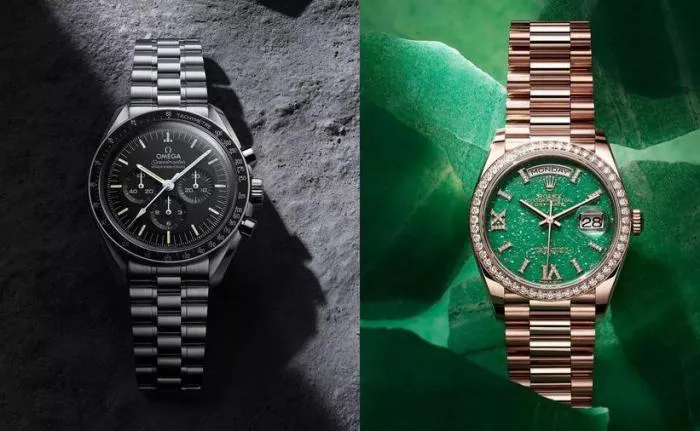Two names dominate the luxury watch industry—Omega and Rolex. For over a century, these Swiss giants have competed fiercely, each boasting unparalleled craftsmanship, innovation, and a loyal global following. The debate over which brand reigns supreme remains unresolved, as both continue to set benchmarks in precision, durability, and prestige.
A Legacy of Excellence
Founded in 1848 by Louis Brandt, Omega began as a small workshop in Switzerland, assembling precision pocket watches. By 1903, the brand adopted the Omega name, later becoming Omega SA in 1984. Its historical milestones include serving as the official timekeeper for the Olympic Games since 1932 and accompanying NASA’s Apollo 11 mission, earning the Speedmaster the iconic “Moonwatch” title.
Rolex, established in 1905 by Hans Wilsdorf and Alfred Davis in London, relocated to Geneva after World War I. The brand pioneered breakthroughs such as the first waterproof wristwatch (the Oyster, 1926) and the self-winding Perpetual movement (1931). Rolex’s precision earned it the first Swiss chronometric certification for wristwatches in 1910, cementing its reputation for reliability.
Design: Tradition vs. Innovation
Omega has consistently pushed boundaries with avant-garde materials like ceramic and titanium, particularly in its Speedmaster, Seamaster, and Planet Ocean collections. Bold dials and larger case sizes (exceeding 45mm) cater to modern tastes, making Omega a favorite among contemporary watch enthusiasts.
Rolex, in contrast, adheres to timeless elegance. Its designs, such as the Yacht-Master II and Deepsea Sea-Dweller (both 44mm), prioritize classic aesthetics over radical changes. While this conservatism reinforces brand identity, it appeals less to those seeking cutting-edge styling.
Performance and Precision
Both brands excel in engineering. Omega’s Master Chronometer certification, awarded after rigorous METAS testing, ensures anti-magnetic resistance up to 15,000 gauss. The Seamaster Planet Ocean Ultra Deep Professional withstands depths of 15,000 meters, a testament to Omega’s technical prowess.
Rolex matches this with stringent in-house testing. The Rolex Deepsea Special famously survived a 10,916-meter dive in 1960. Its movements, like the Caliber 3255 and 3235, offer 70-hour power reserves and exceptional shock resistance.
Pricing and Resale Val@ue
Omega’s entry-level models, such as the De Ville Prestige, start around 4,000. Rolex commands higher premiums, with the Oyster Perpetual 41 priced at approximately $6,700. However, Rolex watches often appreciate in value due to limited availability, whereas Omega’s resale market remains more stable.
The Verdict: A Matter of Preference
Neither brand definitively outshines the other. Omega appeals to those valuing innovation and modern design, while Rolex embodies tradition and enduring value. Whether choosing a Speedmaster or a Submariner, the decision hinges on personal taste—proving both titans continue to shape horology’s future.


